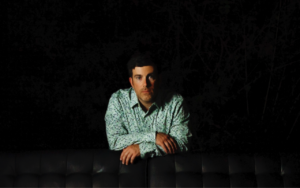
Is the future of music videos vertical and short? Maybe at first.
No, I’m not describing a graph.
What I mean is: quick videos that are shot with the camera held upright (not in landscape) — that’s the key to introducing your music to new “cold” audiences on social platforms.
Sequential marketing is about easy introductions, and short social videos are a great way to begin.
Last week at Music Biz 2018 in Nashville Kevin Breuner, CD Baby’s VP of Marketing, and I had a conversation with Rick Barker, former manager for Taylor Swift and creator of the Music Industry Blueprint. Rick was excited about some new sequential marketing experiments he was running on social using short music videos.
In this week’s Music Industry Blueprint Podcast, Rick goes into further detail on that subject. I’ll outline the points below, but listen to the podcast for all the nuggets.
Understanding native content.
It’s important to understand how video content functions differently on each social platform, and Rick Barker suggests you use those differences to your advantage.
For instance, there are differences in allowable video length:
- Instagram Feed videos – 1 minute
- Instagram Stories videos – 15 seconds
- Twitter videos – 2 minutes
- YouTube videos – no limit
- Facebook videos – no limit
There are also differences in the ideal display.
YouTube is great for HD videos that have a 16:9 aspect ratio. Instagram stories? Not so much. You wanna shoot those vertical, of course.
The shift to vertical video.
Kevin Breuner and I have griped about this at length on CD Baby’s DIY Musician Podcast; we HATE(d) vertical video.
We also hate when people wear shorts on stage though, so take this with a grain of salt.
More accurately, we hate the big bars on either side of the action when vertical video gets displayed in a wider format on YouTube or Facebook.
BUT… on a platform where those bars don’t become a problem (like IG stories), or in a world where everyone is watching video on their phones without tilting them sideways, hell, I have no problem with vertical video at all. In fact, when it’s a Facebook Live video of someone performing at home, like Dawn Beyer does, I prefer vertical video because it allows for a more intimate feel with a focus on the voice/face. We’re not distracted by all the cool (but distancing) stuff in the background. The closer the moving object (your body, guitar, whatever), the more dynamic the video feels when everything behind you stays stationary.
In Rick’s latest episode of his podcast, he mentions that Taylor Swift has a new music video out that was shot in vertical, and intended to be viewed the same way.
The world is changing. From landscape to portrait.
Don’t keep courting a cold audience. Warm them up!
Rick thinks a lot of music videos fail on certain platforms because they’re not optimized for a wide audience. In other words, just because Facebook lets you upload a 4-minute video doesn’t mean you should expect a stranger or casual fan on Facebook to watch that whole video.
The wider your target audience, the lower the barrier to entry should be.
Attention spans are short, and they’re even shorter for people who have no real connection to your music (that would be the “cold” audience). How Rick describes it, if a student has 15 minutes between classes, they’re not going to spend a third of their break watching your whole music video as they’re scrolling through their feed.
15 seconds? They might be into watching that.
If you’re trying to establish a long-term relationship with your audience, you probably haven’t even gotten to the first-kiss phase with most of your listeners. Go slow. Think about their needs. Don’t expect them to go from cold to hot in one leap.
Sequential marketing: finding your most engaged audience.
- Start short and wide — Instead of sharing a whole video, Rick suggests you start with a 15-second clip showing the catchiest part of a song (especially a cover song, which is more immediately appealing to most cold audiences). Share that video to a wider segment of your target audience.
- Create a smaller segment of interested viewers — Next you’ll look in the platform’s advertising dashboard (for instance, Ads Manager on Facebook) to see who viewed your short video in its entirety. Those people will be your next target audience for a slightly longer video.
- Share a 30-second video —Now let’s see who’s committed or intrigued enough by your music to view a longer video.
- Repeat step #2 — Basically, you’re narrowing the audience but deepening the connection.
- Now share the whole (monetized) thing — You can continue the process above as much as you want until you’ve found an ideal audience who’ll be ready to watch a long video, or listen to a whole song, or buy a concert ticket, or whatever else you want them to do. At that point, show your cards! Post a link to your song on streaming services; share your whole video on YouTube or Vimeo; and ask that warm audience to take action in a way that will drive revenue.
That’s sequential marketing in its simplest form.
You’re walking with your audience from the introduction onward, whittling it down to the most engaged listeners. You start with content that asks little of your new audience, and the deeper they go, the more you can ask of them later on.
And when it comes to content that asks little of your audience, super short videos — especially ones where you don’t even have to turn your phone sideways to view them — can be a smart way to start your sequential marketing efforts.

